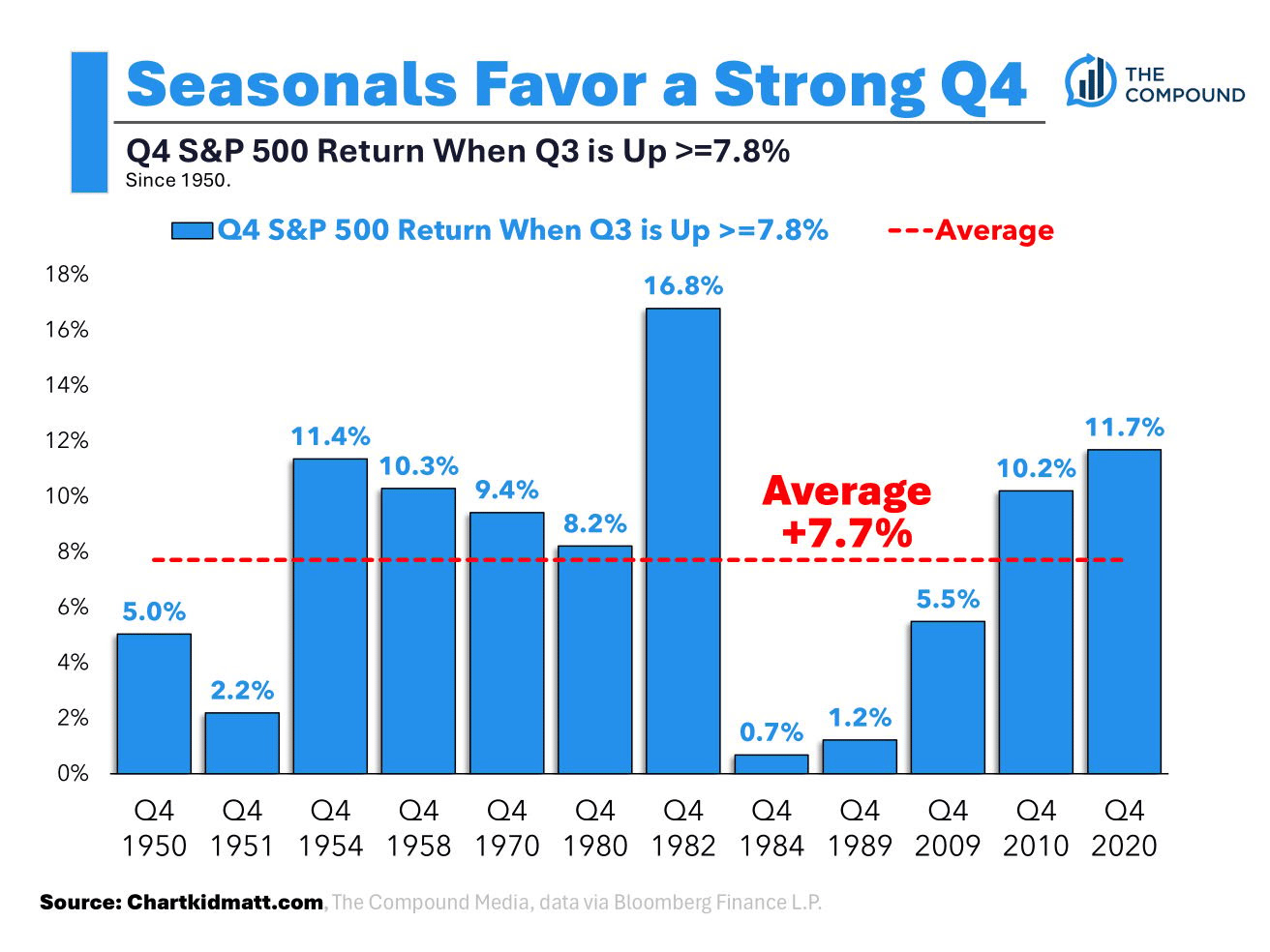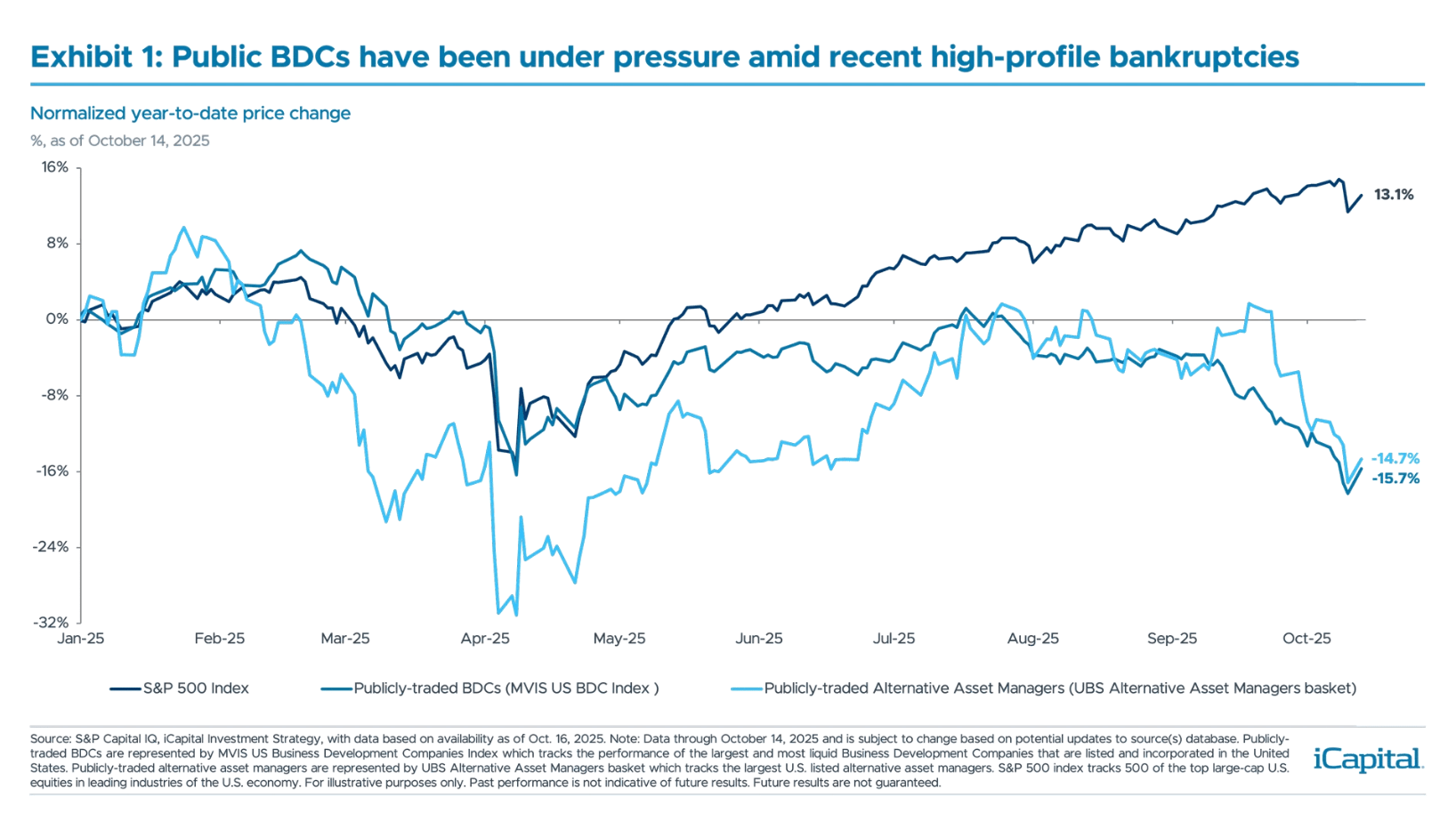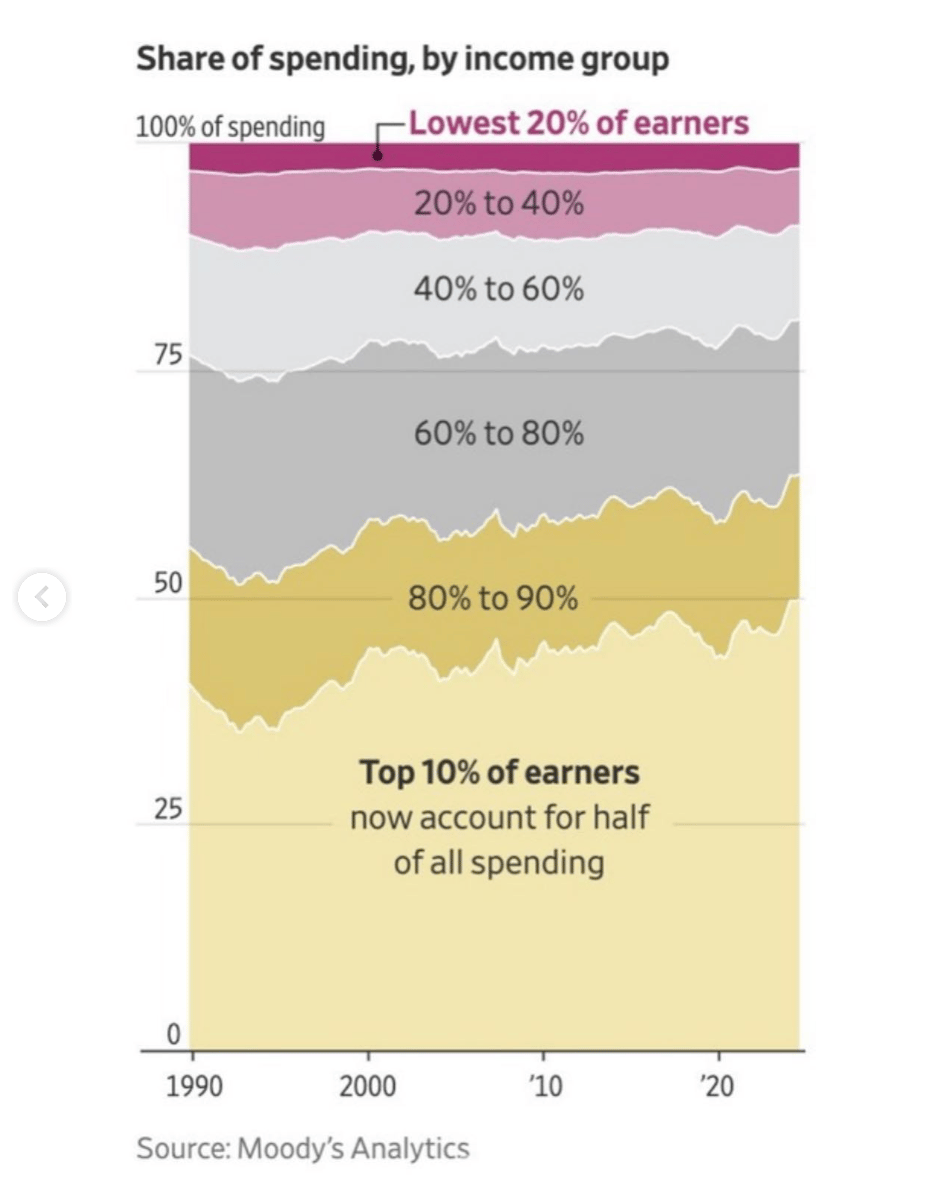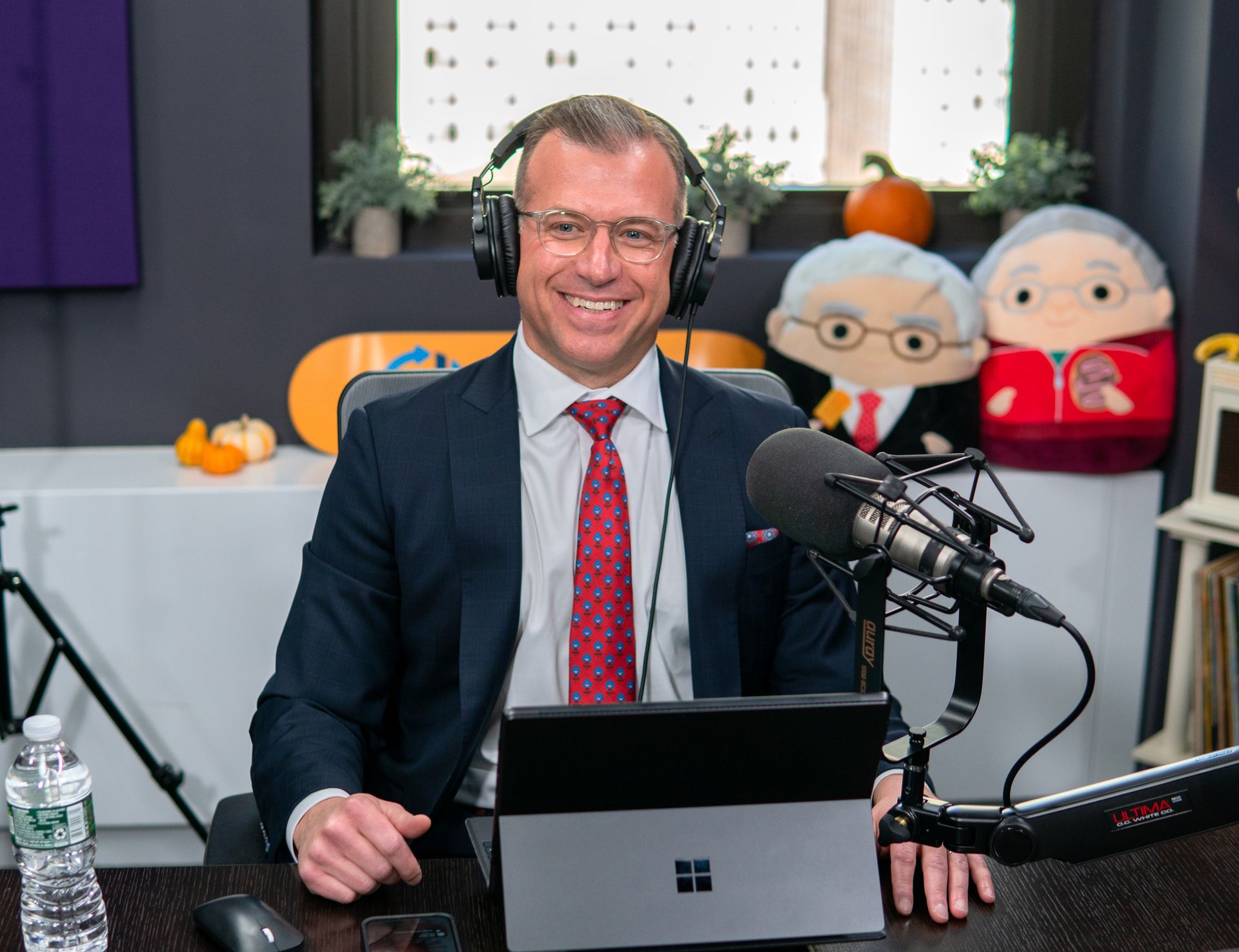- Downtown Josh Brown
- Posts
- When Will It Be Time To Panic About Private Credit?
When Will It Be Time To Panic About Private Credit?
Let's not kick out all four legs of the current bull market
This week we got the return of two-way volatility after a months-long relentless bull market for small caps, large caps, pre-revenue bubble stocks, international stocks, Mag 7 stocks, Bitcoin treasury stocks, gold and silver stocks and pretty much anything else that had a ticker symbol.
What stopped the rally dead in its tracks? As usual, two fairly unpredictable catalysts - Donald Trump announced sudden and severe new tariffs on China ahead of his big meeting with Xi Jinping at the Asia‑Pacific Economic Co‑operation (APEC) Summit in South Korea. This meeting is expected to take place on or about October 31st (BOO!) and these opening moves by both Xi (who surprised everyone with a rare earths export ban) and Trump are designed to give each country something it can “take back” during negotiations. The stock market didn’t see it that way and reacted quickly to this new bout of uncertainty.
Fine, no big deal. Trump loves to throw a punch and then embrace his counterpart in a hug shortly after. Xi and his trade delegates know the game as well as the rest of us by now. I don’t view this as being enough to disrupt what looks to be a cannonball run into year-end.
There’s still a lot of money that wants to chase the performance of the first three quarters of the year. Chart Kid Matt on my research team points out that, historically, a powerful rally in Q3 leads to an equally powerful rally in the subsequent final quarter of the year for the S&P 500:

You can follow Chart Kid on his own blog here, btw.
But I mentioned another catalyst that contributed to the volatility of the week and this one’s a little less predictable in terms of its outcome and its longevity as a source of uncertainty. I’m not going to present myself as the world’s foremost authority on private credit. It’s a bubble we’ve stayed out of as a firm, despite the fevered activity in the space among wirehouse advisors and other RIAs. That decision now appears to have been a wise one as the revelations of busted loans and potential fraud begin hitting the tape. I don’t have enough experience or information to pronounce the recent lending loss revelations as “THE NEXT CRISIS” but I can tell you definitively that if everyone else thinks it will be, it probably won’t. I’m leaning hard on the word probably in that last sentence and with good reason. Things change. If you’re looking for table-pounding conviction on this topic, you’re reading the wrong site.
Right now the credit issues revolving around Business Development Corps (BDCs), private credit funds and regional banks seem to be isolated incidents. The problem is there are four or five different things going on. Will it get to seven as more people fess up, book accounting losses, file for bankruptcy, etc? Will it get to ten? Can’t have ten isolated incidents.
We’re in the Find Out phase of the non-bank financial institution (NBFI, if you’re cool) lending boom. If you listen to the executives at these firms, they’d tell you there’s nothing aberrant about a few loans going bad and that it happens at regular banks all the time. That may turn out to be the case. The problem for those of us who have a memory that extends back twenty years is that these sort of statements are identical to the things Bear Stearns executives were saying about its mortgage fund losses in 2007. They are the same sorts of things we heard from Fannie Mae and Freddie Mac on their way down the drain. They’re identical to the protestations from executives at Countrywide Credit, Washington Mutual, Wachovia, Lehman Bros and a whole litany of now-deceased financial giants who swore that they had things under control too. So while it’s probably premature to start screeching about a financial crisis, it’s also kind of understandable that some people are.

people are saying BDCs are the “canary in the coal mine” presaging a broader credit problem
Because the post-pandemic table has been set upon four legs:
Record corporate profits, investment valuations driving top half of households to spend, vacation, buy concert tickets, subscribe to shit, etc
An asymptotic interest rate cut that never arrives but is always on its way.
The AI CapEx Boom driving S&P 500 EPS (see number 1)
Trumpland Deregulation (SEC, IRS, etc)
Can’t keep the status quo going if you start kicking out one or two of these four legs.
In a worse case scenario, the suspicion about hidden losses or potential fraud freezes these lending markets and the wheels stop turning all at once. This is the thing people are worried about. A credit crisis would also put a major dent in the financing of the AI circus, which would in turn put S&P 500 earnings estimates in doubt which would crater the Nasdaq which would wreak havoc with the confidence of the 10% of households who are now responsible for 50% of all consumer spending and are doing so as a result of the stock market wealth effect. A table with one or two legs left under it can’t remain standing.
That 10% of households doing 50% of the spending is real. It’s also fragile. It rests upon the premise that stocks won’t give back the gains since the launch of ChatGPT, now three Thanksgivings ago.

For a non-panicky take on the lending worries that came to the fore this week, please read what Sonali Basak had to say, writing for (the admittedly biased) iCapital.
While this correction signals investor concern, we believe the move is overdone. Some volatility is justified given shifting rate cut expectations and a moderating earnings outlook for BDCs. However, the magnitude of the broader decline is disproportionate relative to underlying credit fundamentals.
In the cases of First Brands and Tricolor, losses stem largely from isolated incidents involving alleged fraud and opaque business practices – not from a breakdown in underlying demand, which would be far more concerning. Importantly, exposure to these names is limited. While we expect tighter underwriting scrutiny, we view these bankruptcies as idiosyncratic rather than systemic.
For now, we do not see evidence of broader contagion or spillover into core private credit markets. That said, we continue to monitor developments closely. Investors are right to ask tough questions of managers and GPs in light of recent headlines though we believe the fundamentals of private credit remain intact.
I have one last thing to say on this. There’s a lot of space between “just a blip” and “LITERALLY FUCKING 2008.” My guess is we’re somewhere in the middle of this spectrum, but closer to the former. You can disagree, it’s a free country.
Bill Baruch on The Compound and Friends

Michael is distracted by something but I am LOCKED IN
Bill Baruch started out as a commodities trader and has since built a money management firm focused on stocks as well. He’s been one of the best new additions to the cast of CNBC’s The Halftime Report over the years and we always have a blast whenever we’re on the desk together.

Bill’s a good dude, you can take my word for it
It was my pleasure to welcome Bill as a guest on TCAF this week. We talk about the credit crisis, gold, silver and copper, AI, Mag 7 names and a whole lot more. Listen or watch at the links below.
🎥 Watch this week’s episode of The Compound and Friends on YouTube:
🎧 Listen on Spotify:
There’s Never Just One Cockroach
The Compound and Friends · Episode
🎵 Listen on Spotify
🎙 Listen on Apple Podcasts:
There’s Never Just One Cockroach
Podcast Episode · The Compound and Friends · 10/17/2025 · 1h 11m
🍎 Listen on Apple Podcasts
That’s it from me this week. Subscribe to the YouTube channel ASAP, I have the return of Nick Colas and Jessica Rabe of DataTrek tomorrow and much more to come.